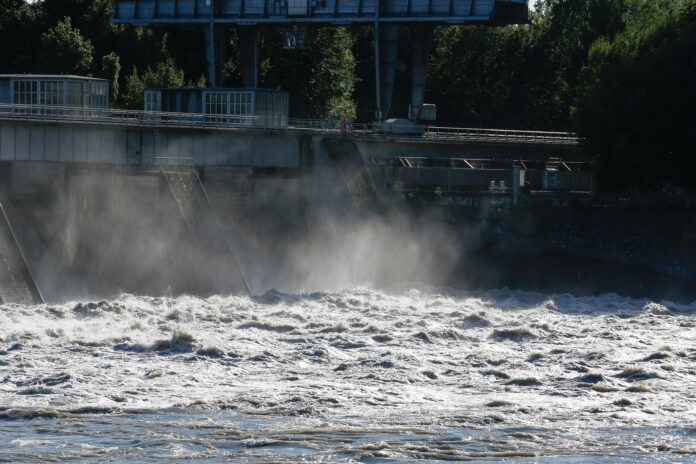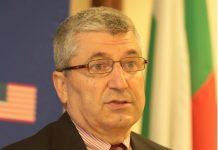
Ivan Pandakov is an engineer by education, graduated in Electrical Power Engineering and Electrical Equipment at the Technical University of Sofia. For more than 12 years, he has been leading and working as a designer of large power plants in one of the serious engineering companies on the Bulgarian market.
In parallel, he is actively involved in the civil nature conservation sector and he is the chairman of the public benefit fishing association „Balkanka“. One of the main missions of the association is active actions against investment intentions and activities damaging the rivers and reservoirs of Bulgaria. It also works to improve the administrative capacity of the institutions and society in general, through active participation in many processes of drafting important documents in the field of water and biodiversity management. The association was founded by fishermen and tries to preserve this characteristic that continues to unite its members.
In the first part of the interview with Ivan Pandakov, we talked mainly about nuclear and „green“ energy, and in the second part, the topic will be continued and upgraded with an emphasis on the harm of hydropower plants (HPP) and the activities of the „Balkanka“ association.
– Is the balance between low electricity prices and „green“ energy possible?
I cannot give a sufficiently reasoned answer to this question. The logic is that the closer a power is built to the consumers, the less transmission prices and hence the lower price (without this being the only determining component). The difficult balancing of renewable energy is one of the big problems. Unfortunately, the day is only ten hours in our country, and if it is cloudy, the radiation drops by half and then the production drops.
This also necessitates the maintenance of quick-start balancing conventional production facilities, which is not cheap. It’s the same with wind and wind turbines. So far, I can only remember one such park being asked to build balancing power for energy storage, which was an expensive project, and would cover for some period of time the power of only one of many generators in the park.
Here, we should not forget the private investment component and that we are talking about serious investments, often financed with a loan. Securing the loans requires relatively frequent production beyond purely technological needs, and this means only one thing – a greater need for balancing, at times when there is not enough consumption in the system, which also raises prices. Of course, there are a number of other geopolitical factors that affect energy prices.
– What is the potential of the various sources of „green“ energy in Bulgaria, such as solar, wind, hydropower, etc.?
Undoubtedly, Bulgaria is a sunny country, so there is potential for PV development. The problem is the way they are built. For hydropower plants, I can say without a doubt that the capacity is limited. Bulgaria is the poorest country in the European Union with extremely irregular outflow. Practice shows that HPPs in our country cannot meet the environmental standards in the way they are built, for which there is also a criminal procedure in the European Commission.
Regarding wind power plants, I have no personal observations. Recently, voices have been raised about the deployment of wind power plants in the marine waters of the Black Sea, after it was established that the deployment of wind generators in Dobrudzha encounters a number of conflicts with the protection of one of the main migration corridors for birds – Via pontica.
However, their location in the relatively narrow and small water area of the Black Sea, which we have, even if there is data on the negative impact of wind generators on marine organisms, calls into question their development. Wind generators create significant discomfort when you are nearby, and this may affect the native Black Sea coast as a tourist destination in a negative way.
– How are hydroelectric power plants in Bulgaria harming rivers and the environment?
I have already mentioned some of the impacts of hydropower on rivers. Here, when we talk about building hydropower plants in the Balkans, we must bear in mind that the Balkans can safely be called the ‘Blue Heart of Europe’. For a number of geopolitical reasons, the Balkans were lagging behind in their development during the industrial age in Europe, which for Europe was also linked to the development of hydropower as a technology for energy extraction. Furthermore, when we talk about river biodiversity, we should always mention the fact that biodiversity is determined by the diversity of the catchments in a given area. The Balkans, a relatively small area, lie between the Adriatic, Ionian, Aegean and Black Seas, and are bounded to the north by the Alps and Carpathians, and are also bisected by Europe’s largest river, the Danube. This has determined the development of a great biodiversity with a large percentage of endemically represented species (nearly 60%), i.e. species that are found only here and nowhere else in the world.
Therefore, the impact on the rivers of the Balkans would undoubtedly mean a much greater loss of biodiversity than anywhere else in Europe.
The topic of hydropower is very big, especially since this energy, from what we have seen, is a typical example that renewable energy and green energy should not always be equated.
The first impact we observe is the damming of a river. When a river is dammed, it changes its hydrological regime, water velocity, and in the case of derivation hydroelectric plants (hydroelectric plants, where between the turbine and the intake we have some distance to create a drop of water, usually small river hydroelectric plants) and especially, if the distance of the derivation is several km, a thermal shock is also observed in the river after the turbine, because when a water flows in its natural bed, the friction in the stones heats it up, while the resistance in the pipe is much less. The damming of a river results in the creation of a backwater lake, which can be several metres to several kilometres long, and in the case of hydroelectric power on the Danube, up to several hundred kilometres. This leads to a rise in the water table, which in some places causes flooding of houses and landslide processes. Similar processes are also observed downstream of the wall, where, due to the cessation of sediment transport, the flow of water leads to intensive bottom erosion and the river begins to sink. This burial lowers the water table, which in turn lowers the hydrostatic pressure in the soils and hence, apart from the logical drying of land, people’s wells and so on, landslide processes can also occur.
Another negative effect is that backwaters often silt up rivers, especially if the hydroelectric plant is located on a river laden with organic pollution. The stagnation of water, accompanied by the formation of a water mirror and sunshine, is a prerequisite for the development of violent eutrophication processes. This process is subsequently associated with the development of vegetation decay and the release of methane into the atmosphere, which can be significant in large dams. In other cases, if pollutants are flowing down the river, their accumulation may lead to their seepage into groundwater bodies, and from there into drinking wells located on river terraces or somewhere on a groundwater body. If water is discharged into the river from mining and processing complexes, this accumulates in the tailings ponds a significant amount of heavy metals and other process products, which are a ticking time bomb.
Another problem – hindering the migration of fish and other aquatic organisms. Walls are often built that are in no way adapted to the capabilities of aquatic organisms. Blocking migration is a prerequisite for the extinction of a species, as it is a fundamental process for the movement of substances in nature. There is no way to sustain life in the mountains if there is no migration from the lower reaches of the river. The blocking of migration and the fragmentation of populations can also lead to genetic impoverishment and inbreeding, which will give rise to a slow decline in the reproductive capacity of populations, and it can also disappear.
The biggest and most easily visible impact – drying up rivers. According to the Water Act, water is to be provided in rivers downstream of abstractions on a priority basis, with 10% of the average annual water quantity to be released to the point of abstraction, but not less than the minimum average monthly water quantity with 95% security. This rule, however conditional and imperfect, is not complied with most of the time, and in a large percentage of cases, the breach of the law stems from the permit itself, and is furthermore not complied with by the operator. Often there is no possibility to measure the amount of water released into the river after the interception, which is a prerequisite for abuse. Reports to the institutions lead to failure and recurrence of a given overdraft in a condition of recurrence for years. This not only leads to complete loss of life, but in places, rivers are turned into vegetated ravines, posing a flood risk to settlements further downstream. If the rivers were flowing, no trees could grow in them, and they would only be on the banks, which in turn is the best bank protection.
Construction of HPP in Protected Territories/Zones – our studies show that 80% of plants in our country are located in protected areas of the Natura 2000 network, and we have not found a single decent plant that does not violate the water law. I.e. the impact described above is largely seen in the most valuable natural habitats, and the loss of biodiversity is enormous. As we mentioned above, there are about 260 hydroelectric power plants operating in our country, and nearly 200 of them were built after 2000, they are usually small and micro plants and produce less than 2% of the electricity, even with all established violations.
And yet, we should emphasize again, the biggest problem is that the rivers are dried up after almost every water catchment in our country, and these are hundreds and even thousands of km of rivers in a regime where the conditions are incompatible with life.
– What are the main priorities of „Balkanka“ association for the near future?
„Balkanka“ continues its active campaign to inform the public and institutions about what is happening with Bulgarian rivers and reservoirs, partnership with other organizations with similar interests. Still, anglers are among the first to suffer when a river is killed and the first to see the problem. We don’t stop dreaming that the processes that are rapidly developing in Europe, namely for the removal of dams on rivers, will reach us and here too we will begin to remove dams, even if at first these are decommissioned ones, we will still achieve significant success.
Of course, last but not least is the work with young people. For 6 years, we have been organizing green schools along the rivers of Bulgaria for children, where we teach them respect and knowledge of river systems. In addition, since last year, we have set ourselves the goal of working with students in „Ecology“, „Biology“, „Forestry“ majors, in order to familiarize them with the real problems on Bulgarian rivers. We think that only in this way, we will sow the change in thinking and in the institutions themselves, since we often have to fight with unsuccessful administrative decisions of a competent authority.
Finally, I would like to point out that in „Balkanka“ we are all volunteers, we are mainly financed by membership fees and the activities are not of material interest to the members of the association. In this regard, anyone who shares the principles of the association is welcome to join us and help us in the cause we have set ourselves.
















